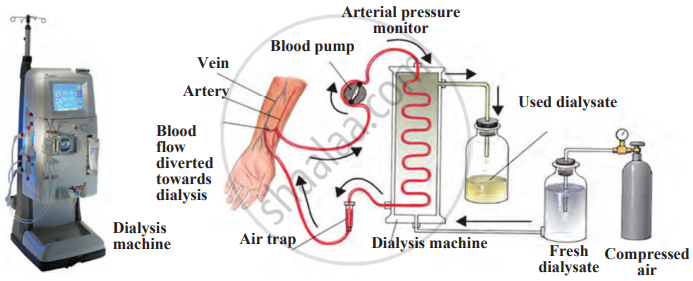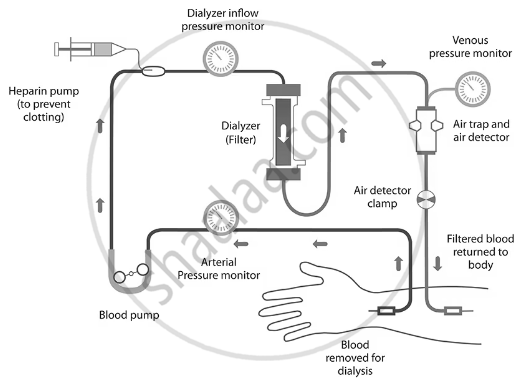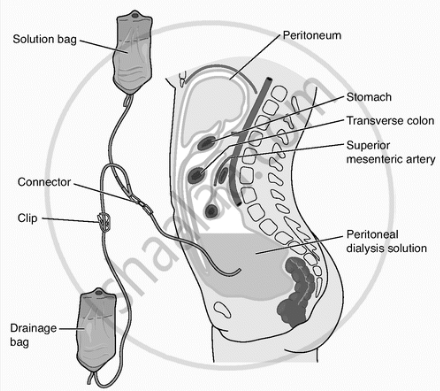Topics
Basic Biology
Cell - the Structure and Fundamental Unit of Life [For Revision Only]
- Cell: Structural and Functional Unit of Life
- Organisms Show Variety in Cell Number, Shape and Size
- Plant Cell and Animal Cell
- Structure of the Cell
- Semi-permeable Membrane (Cell Membrane)
- Plasma Membrane
- Cell Wall - “Supporter and Protector”
- Nucleus - “Brain” of the Cell
- Cytoplasm - “Area of Movement”
- Endoplasmic Reticulum (ER)
- Mitochondria - “Power House of the Cell”
- Golgi Apparatus - "The delivery system of the cell"
- Ribosomes - "The sites of protein synthesis"
- Lysosome - “Suicidal Bag”
- Centrosome and Centrioles
- Plastids
- Non-living Substances Or Cell Inclusion
- Microscopic examination of onion peel
Cell Cycle, Cell Division and Structure of Chromosomes
- Chromosomes - The Carriers of Heredity
- Chromatin
- Deoxyribonucleic Acid (DNA) and Its Structure
- Histone Proteins
- Genes and Genetic
- Need for New Cells
- Cell Cycle - "Divide, Grow and Redivide"
- Cell Division: an Essential Life Process
- Mitosis and Its Phases
- Phases of Mitosis: Karyokinesis (Division of Nucleus)
- Phases of Mitosis: Cytokinesis (Division of Cytoplasm)
- Significance of Mitosis
- Meiosis as a Reduction Division
- Stages of Meiosis: Meiosis I
- Stages of Meiosis: Meiosis II
- Significance of Meiosis
Genetics – Some Basic Fundamentals
- Genes and Genetic
- Gregor Johann Mendel – Father of Genetics
- Heredity or Inheritance
- Variation
- Chromosomes - The Carriers of Heredity
- Types of Chromosomes
- Sex Determination
- Sex Linked Inheritance
- Mendelian Inheritance - Mendel’s Law of Heredity
- Monohybrid Cross
- Gregor Johann Mendel – Father of Genetics
- Mendel's Experiments Inheritance
- Mutation
- Genes and their Alleles
- Genotype and Phenotype
- From parents to children - tongue rolling - An example of inheritance
Plant Physiology
Absorption by Roots: The Processes Involved
- Plant Anatomy and Plant Physiology
- Water absorbing organ
- Need of Water and Minerals for Plant
- Characteristics of Roots for Absorbing Water
- Semi-permeable Membrane (Cell Membrane)
- Means of Transport in Plants
- Concept of Imbibition
- Simple Diffusion
- Concept of Osmosis
- Osmotic Pressure
- Active Transport
- Turgidity and Flaccidity (Plasmolysis)
- Root Pressure
- Translocation of Water (Ascent of Sap)
Transpiration
- Transpiration
- Measurement of Transpiration
- Types of Transpiration
- Factors Affecting the Rate of Transpiration
- Adaptations in Plants to Reduce Excessive Transpiration
- Significance of Transpiration
- Direct Loss of Water by Plants - Guttation and Bleeding
Photosynthesis: Provider of Food for All
- Photosynthesis: Food-Making Process in Plants
- Significance of Photosynthesis
- Chlorophyll: The Vital Plant Pigment
- Regulation of Stomatal Opening for Letting in Carbon Dioxide
- Process of Photosynthesis
- Role of Sunlight in Photosynthesis
- Light Dependent Reaction (Hill Reaction \ Light Reaction)
- Photophosphorylation
- Light Independent Reactions (Dark Reaction \ Biosynthetic Phase)
- Adaptations in Leaf to Perform Photosynthesis
- End Result of the Products of Photosynthesis
- Factors Affecting Photosynthesis
- Experiments on Photosynthesis
- The Carbon Cycle
- Respiration and Photosynthesis
- Photosynthesis: Food-Making Process in Plants
Chemical Coordination in Plants
- Plant Hormones
- Types of Plant Hormones: Auxins
- Types of Plant Hormones: Gibberellins
- Types of Plant Hormones: Cytokinins
- Types of Plant Hormones: Ethylene
- Types of Plant Hormones: Abscisic Acid (ABA)
- Coordination in Plant: Tropism in Plants
Human Anatomy and Physiology
The Circulatory System
- Circulation in Animals
- Fluids in Our Body
- Blood
- Functions of Blood
- Composition of Blood: Plasma (The Liquid Portion of Blood)
- Composition of Blood: Red Blood Cells (Erythrocytes)
- Composition of Blood: White Blood Cells (Leukocytes)
- Composition of Blood: Blood Platelets (Thrombocytes)
- Function of Platelets - Clotting of Blood (Coagulation)
- Blood Transfusion and Blood Groups (ABO and Rh system)
- Blood Circulatory System in Human
- Human Heart
- Circulation of Blood in the Heart (Functioning of Heart)
- Working mechanism of human heart
- Heart Beat - Heart Sounds "LUBB" and "DUP"
- Pacemaker
- Blood Vessels
- Types of Closed Circulation
- Blood Pressure (B.P.)
- Tissue Fluid (Or Intercellular Fluid)
- Lymph and Lymphatic System
- The Spleen
The Excretory System (Elimination of Body Wastes)
Nervous System and Sense Organs
- Human Nervous System
- Neuron (Or Nerve Cell) and Its Types
- Nerve Fibres
- Transmission of Nerve Impulse
- Synapse - Properties of nerve fibres
- Major Division of the Nervous System
- The Human Brain - Forebrain
- Peripheral Nervous System (PNS)
- The Spinal Cord
- Reflex and Reflex Action
- Types of Reflexes
- Nervous Pathways in Reflexes
- Reflex Arc
- Complex Reflex Action
- Sense Organ
- The Eyes
- Human Eye
- Working of the Human Eye
- Eye Defect and Its Correction: Myopia Or Near-sightedness
- Eye Defect and its Correction: Hypermetropia or Far-sightedness
- Eye Defect and Its Correction: Presbyopia
- Eye Defect and Its Correction: Astigmatism
- Some Common Defects of the Eye
- Stereoscopic (Binocular) Vision
- Functions of the Ear
- Human Ear
The Endocrine System
- Need for the Regulation of Body Activities
- Chemical Coordination
- Human Endocrine System
- Adrenal Gland (Suprarenal Gland)
- Pancreas (Islets of Langerhans)
- Thyroid Gland
- Pituitary Gland or Hypophysis Gland
- Control of Hormonal Secretions
- Difference in Endocrine and Exocrine Glands
Sense Organs
- Sense Organ
- The Eyes
- Human Eye
- Working of the Human Eye
- Eye Defect and Its Correction: Myopia Or Near-sightedness
- Eye Defect and its Correction: Hypermetropia or Far-sightedness
- Eye Defect and Its Correction: Presbyopia
- Eye Defect and Its Correction: Astigmatism
- Some Common Defects of the Eye
- Stereoscopic (Binocular) Vision
- Functions of the Ear
- Human Ear
The Reproductive System
- Reproduction
- Mode of Reproduction in Animal
- Asexual Reproduction in Animal
- Sexual Reproduction in Animals
- Human Reproduction
- The Male Reproductive System
- The Female Reproductive System
- Role of Hormones in Reproduction
- Menstrual Cycle (Ovarian Cycle)
- Fertilization in Human
- Implantation in Human
- Pregnancy in Humans
- Placenta (Growth) in Human
- Embryonic Development in Human
- Parturition (Birth) in Human
Population
- Population Explosion - Rising Population a Global Threat
- World Population Through the Ages
- Rapid Rise in Population
- A Highly Simplified Model of Population Growth
- Population
- Factors Responsible for Population Explosion in India
- Problems of Over Population
- Rising Population - Pressure on Natural Resources
- Population Growth
- Consequences of Urbanisation
- Terms Related to the Population
- Population Control
- Family Planning
Human Evolution
Pollution
- Waste and Its Categories
- Pollution and Its Types
- Air Pollution and Its Causes
- Prevention of Air Pollution
- Water Pollution and Its Causes
- Soil Pollution and its Causes
- Radiation
- Noise Pollution
- Measures to Limit Noise Pollution
- Acid Rain
- Causes of Acid Rain
- Green House Effect
- Global Warming
- Ozone
- Ozone Layer Depletion
- Effects of Air Pollution
- Effects of Water Pollution
- Effects of Soil Pollution
- Control of Pollution
Physical Health and Hygiene
Health Organisations
- International Bodies: WHO (World Health Organisation)
- Common Health Problems in India
Aids to Health
- Health
- First Aid and Emergency Action
- Antiseptics and Disinfectants
- Antibiotics
- Dialysis
- Types of Dialysis
Dialysis:
The kidneys may stop working efficiently due to injury, infection, or a decrease in blood supply. When this happens, toxic substances build up in the body, which can be life-threatening. If the kidneys fail, a process called dialysis is used to remove nitrogenous wastes from the blood with the help of a man-made machine. In dialysis:
- About 500 ml of blood is taken out of the body at a time and passed through the machine.
- The machine filters and removes the harmful waste substances. The purified blood is then returned to the patient’s body.

Dialysis of blood
Types of Dialysis:
1. Hemodialysis
In haemodialysis, blood is passed through a filter known as a dialyser, which is located outside the body. The dialyzer is often referred to as an "artificial kidney." The blood is removed from the body, cleaned in the machine, and returned to the body. This process is usually done in a hospital or dialysis centre and takes about 3-4 hours, typically a few times a week.

2. Peritoneal Dialysis
In peritoneal dialysis, the inside lining of your abdomen (called the peritoneum) acts as a natural filter. A special fluid is placed in the abdomen through a tube. This fluid helps draw out waste from the blood. After a few hours, the fluid is drained and replaced with fresh fluid. This type can be done at home, often while sleeping.

